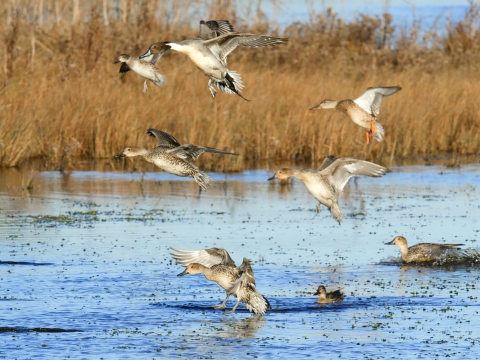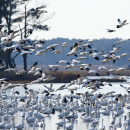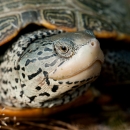About Us
Since this site is only accessed by the public during the hunting season, it is truly a refuge for a variety of wetland and woodland birds. It also holds a unique treasure called Lucky Boy fen - one of only four sea-level fens found in Virginia. This unique feature of the refuge is located just above the highest tide levels, at the base of a slope where abundant groundwater discharges. Sea-level fens are nutrient-poor, maritime seepage wetlands, confined to a few sites with an unusual combination of environmental conditions for the mid-Atlantic.
Our Mission
Refuge Vision
Chincoteague and Wallops Island National Wildlife Refuges encompass extraordinary and ever-changing lands at the edge of the sea, a place where unique habitats and wildlife flourish. In partnership with others, the refuges are a vital part of a larger system of protected lands and waters on the Delmarva Peninsula critical to migratory birds.
Refuge Purpose
Each unit of the National Wildlife Refuge System is established to serve a statutory purpose that targets the conservation of native species dependent on its lands and waters. All activities on those acres are reviewed for compatibility with this statutory purpose.
The purpose(s) of this unit is
- “... for use as an inviolate sanctuary, or for any other management purpose, for migratory birds.” (16 U.S.C. § 715d)
“... particular value in carrying out the national migratory bird management program.” (16 U.S.C. § 667b)
Our History
It started with NASA
Wallops Island National Wildlife Refuge is adjacent to the NASA Wallops Flight Facility. In 1975, NASA transferred ownership of the land that now comprises this Wallops Island National Wildlife to the U.S. Fish and Wildlife Service. Administration and management of these lands became the responsibility of Chincoteague National Wildlife Refuge.
In 2006, representatives from both agencies began extensive discussions concerning current and future challenges jointly faced by both of our agencies in light of climate change climate change
Climate change includes both global warming driven by human-induced emissions of greenhouse gases and the resulting large-scale shifts in weather patterns. Though there have been previous periods of climatic change, since the mid-20th century humans have had an unprecedented impact on Earth's climate system and caused change on a global scale.
Learn more about climate change and the corresponding rise in sea level. It became readily apparent that the opportunities presented by working together as part of a larger collaborative effort would provide for a greater scientific understanding of our shared coastal environment, and that the advancements in the use of technologies for the study of these environments could be shared with others.
On August 11, 2011, NASA Wallops Flight Facility, the Chincoteague Bay Field Station, and the U.S. Fish and Wildlife Service entered into a “Nonreimbursable Space Act Agreement” for the purpose of: Technical Collaboration for Data Collection and Studies related to Climate Change, Habitat Shifts, Algorithm Development, Instrument Development, and Small Satellite Development. This agreement forms the backbone of many current and future collaborative efforts.
Other Facilities in this Complex
We are managed as part of the Chincoteague National Wildlife Refuge Complex. Located on the Eastern Shore of Virginia, this group of sites protect similar habitat types and wildlife. This means common management needs can be applied toward a common purpose throughout the Complex.


